The term “Swamp Ash” does not refer to any particular species of ash (Fraxinus genus), but is generally used by luthiers to describe lightweight wood yielded from ash trees which are usually found in wet or swampy areas.
Weight of Ash Types Compared |
||
|
Average Dried Weight: less than 30-33.6 lbs/ft3 (481-538 kg/m3) |
Board-foot weight: less than 2.5-2.8 pounds |
|
|
Average Dried Weight: 42 lbs/ft3 (675 kg/m3) |
Board-foot weight: ~3.5 pounds |
|
|
Average Dried Weight: 40 lbs/ft3 (640 kg/m3) |
Board-foot weight: ~3.3 pounds |
|
|
Average Dried Weight: 34 lbs/ft3 (545 kg/m3) |
Board-foot weight: ~2.8 pounds |
|
|
Average Dried Weight: 42 lbs/ft3 (680 kg/m3) |
Board-foot weight: ~3.5 pounds |
|

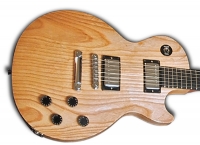
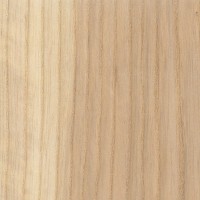
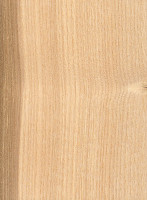
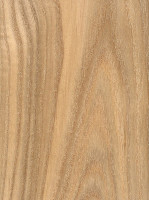
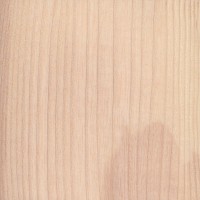



I’m just looking for the janka hardness of swamp ash. I get a bunch of scrap swamp ash from work. We make guitar bodies for luthiers. Im not too concerned about definitions just the hardness
There is no single number for hardness because swamp ash is so variable in weight. You could use black ash’s hardness value as a high mark for what might be the max.
As a Luthier of 40 plus years (20 years of that at Fender Instruments ) , if someone sells me some Swamp Ash and what shows up isn’t extraordinary light and highly figured with great tonal qualities, they will be getting my check canceled and a load of phony Fraxinus genus back collect. And for the record, Swamp Ash that does not come from growths in high moisture areas, often swampy areas, such as in Georgia, Texas, North Florida, South Carolina, etc have less figure, appealing color and tonal qualities. I know as I shopped sources and built the instruments… Read more »
Disagree woth you jj
You would know. The main commercial use of swamp ash is solid electric guitar bodies. It’s use for that purpose of one of Leo Fender’s many innovations, though he likely used wood readily available from lumberyards in the 50s. My understanding is that the very lightweight true swamp ash is the now threatened Carolina ash (pop ash, water ash–Fraxinus caroliniana). This species has a density much lower than any other in the genus. It’s range is the region you describe.
Exactly! “Swamp ash” is literally any ash variety grown in wetlands, where the ROOT SYSTEM (not necessarily the tree!) is submerged in water for the majority of winter and spring seasons. Ash grown in swamps / wetlands, grows FAST. Therefore it is lighter in weight and lower in density compared to what’s sometimes called “Northern (AKA baseball bat) ash”. The lighter weight (close to red alder) is what makes it an appealing option for electric guitar builders. As for figuring, there isn’t much discernible difference between “Swamp” and “Northern” ash. Both can be plain looking or have figure, just like… Read more »
The wood that was available in the 50’s is very different than what’s available today.
I picked up a sassafras guitar as an alternative to swamp ash. (All my fenders are ash, except one.) This sassafras guitar is very nice.. Very pleased so far with it’s appearance and tone. It’s heavy but I expected it to be.
don’t know why it would be “heavy”; sassafrass isn’t…..
I have to disagree with your generalization. Though many manufacturers and others seem intent on describing Swamp Ash as everything from, a form of Fraxinus americana that is simply growing in a wet place, to Pumpkin Ash (Fraxinus profunda,) and who knows what else, it’s all patent nonsense. In biology each living organism is classified using binomial nomenclature, i.e., using a scientific name of two words, Latin in form, and usually derived from Greek or Latin roots. The convention is precise. The first name is the genus of the organism. Genus refers to the lowest classification before determining the related… Read more »
WOW! That’s a mouth full! Very well thought out and stated.
Fraxinus pennsylvanica grows in the north east and is hard and heavy, same tree grows in southern swampy climate and grows lighter and less dense. Swamp Ash was never intended to be a species name, it’s a slang term used
just to identify it’s weight and density.
While I agree with your sentiments on scientific naming, I still maintain that the common name “swamp ash” is an ambiguous term, as is the case with so many other common names. This is especially true especially since “swamp ash” is, to my knowledge, not the primary common name of any species, and is, at best, a secondary/local name that changes based on geography. For instance, if you take a look at another (more recent) USDA publication, such as Harry Alden’s “Hardwoods of North America” (Gen. Tech. Rep. FPL–GTR–83) you’ll see that the ambiguous term “swamp ash” can refer to… Read more »
I agree with your statement that secondary and local names change according to geography. “Ironwood,” for example, is commonly applied to dozens of different species, for example Desert Ironwood (Olneya tesota) and American Hornbeam (Carpinus caroliniana). Both are commonly referred to as “Ironwood.” To further compound the matter, while “Ironwood” can be used for either species, Desert Ironwood has no other common name (that I know of) while hornbeam can be called musclewood or blue-beech. Geography, man. And that’s only within the continental US. Explore the moniker worldwide and you’ll find even more species that are known as ironwood. I… Read more »
You’re only repeating what you’ve read, somrthi g that’s been repeated over and over and obviously never substantiated.
agreed…there are three distinct names for the wood of a specific tree: 1. the “botanical/scientific name”, as in that post above, utilized in scientific/legal discussion, and which concerns the tree, more as a botanical entity, than specifically as regarding the wood produced (this classification is 99% “set in stone”, but allowing for the ongoing growth of scientific knowledge); 2. the “trade name”, which is utilized commonly in industry and trade/commerce/utilization; and 3, the “local name”, utilized by the people who live where that tree/wood is found: thus, 1. Dalbergia melanoxylon, 2.sold/known internationally as “African Blackwood”, and 3. referred to, as… Read more »
I have often wondered if what is sold as really light “swamp ash” is nothing more than some Catalpa species, since some of the advertised densities of the wood are very much lighter than any Fraxinus species that I know of. If so, that is some really expensive Catalpa!
I have seen some extremely lightweight “swamp ash” lumber in luthier’s shops that I’m pretty sure was actually Paulownia (I’ve not used Catalpa but have heard it’s similar.) Two ways to tell: 1) Paulownia has grain fuzziness where Swamp Ash cuts like butter 2) Most paulownia or empresswood is lighter than even the lightest Swamp Ash. Very little punky guitar ash is under 2.0LB/BF kiln dried. However, most paulownia is.
Sorry but catalpa is totally different in structure. Catalpa also has a tell tale smell that hard to define. Turpentine or animal urine are the 2 more common smells you encounter with catalpa. Also know that catalpa is genrrally an ornamental tree and most commonly found in neighborhoods. Not a commerically viable tree. Though they may have some shared qualities. A quick look at the end grain and smell check should give you the answer. Catalpa should be more expensive per BF than any ash. Due to the fact that its not found in abundance anymore. (Not in a commercially… Read more »